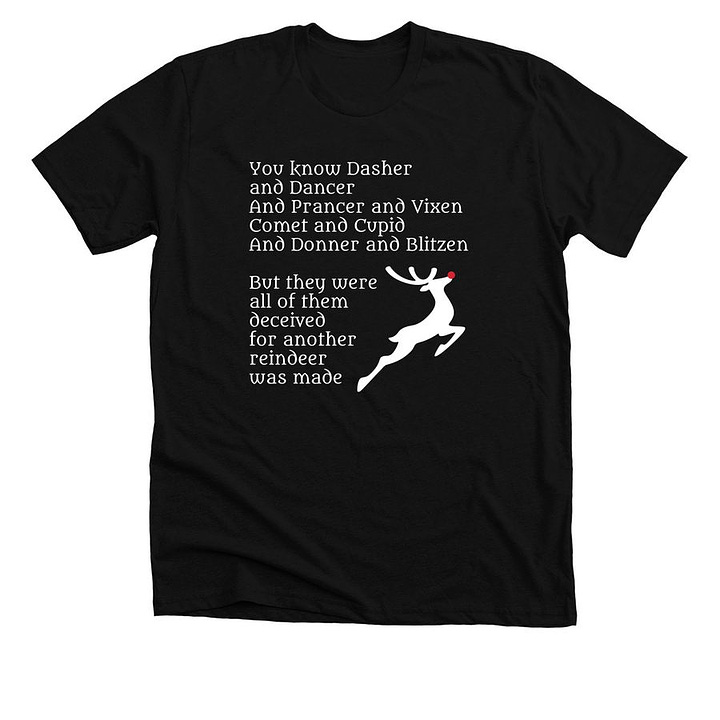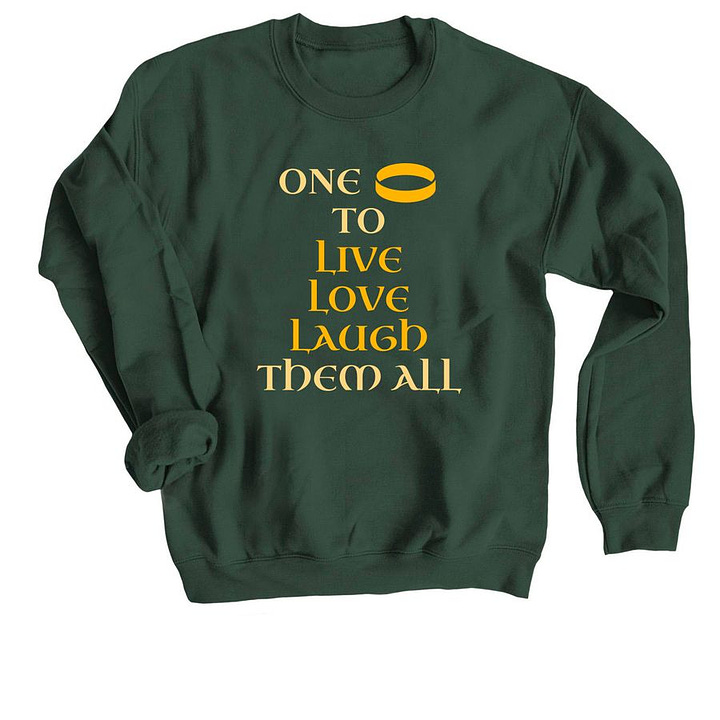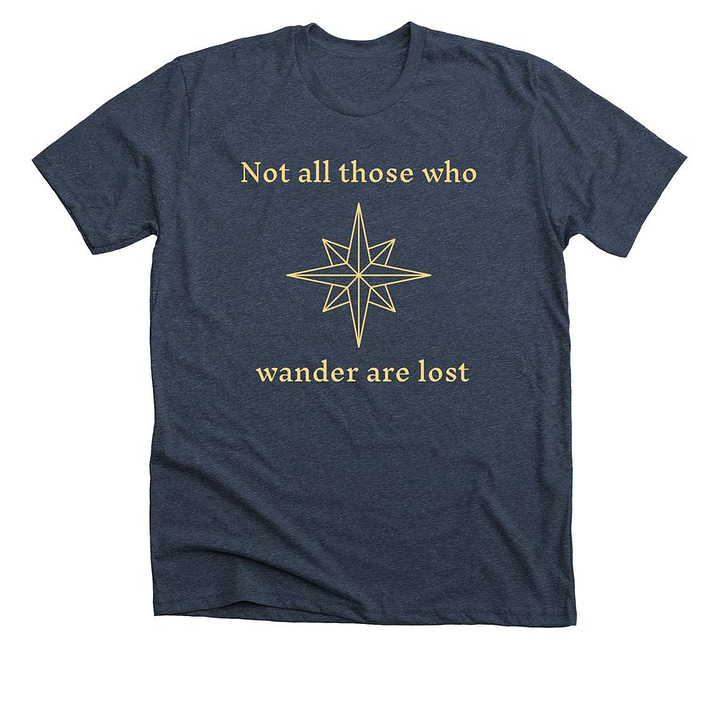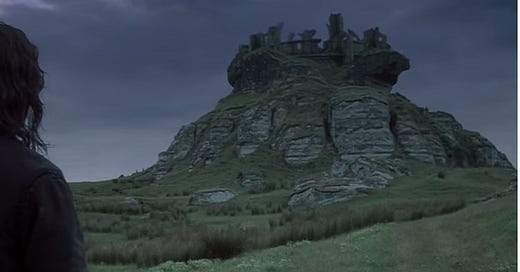A Longing for the World
How Tolkien’s World Building Can Help Us See Our World Better
Mae govannen, friends! Josh here. For the month of October I’m taking a break from my usual schedule as my family adjusts to the addition of a new little Hobbit! But I’ve lined up a great slate of guest writers to keep the Tolkien content flowing.
Today’s guest author Jeff King has a piece on the sense of longing present in The Lord of the Rings and what it says about both Middle-earth and our own world today.
Jeff King is a writer and humorist living in Canada with his wife, six kids, and an eleventy-one-year-old printing press he and his brother-in-law are attempting to use unironically. In addition to fiction, he also writes two newsletters:
(on theology, technology, and the imagination) and (on local and family histories).I enjoyed this lovely and thoughtful piece and hope you do as well!
A Longing for the World
How Tolkien’s World Building Can Help Us See Our World Better
By Jeff King
I work in a city. Every day, I travel along asphalt roads, past soaring, steel skyscrapers. Life under these peculiarly modern conditions often leaves me longing for more – longing for the world, even, as if the day-to-day world I find myself in is concealing something deeper that’s become hidden from view. At times, I find myself wondering: Just where am I, anyways?
Tolkien explores similar feelings in his writing. In The Fellowship of the Ring, he describes the journey of the hobbits and their mysterious guide, Strider, as they walk along an old path that will lead to their destination: the hill called Weathertop. As they walk, Merry suddenly says, “I wonder who made this path, and what for” (p. 249). The ruins make him nervous, and he is especially worried that there might be a barrow ahead. (Understandably, he’s recently become quite barrow-averse).
Strider explains that, despite its dreary appearance, the ancient history of the land they are walking through tells a very different tale. On Weathertop, in particular, “[i]t is told that Elendil stood there watching for the coming of Gil-galad out of the West, in the days of the Last Alliance.”
This response of course only prompts more questions from Merry, more stories from Strider, and a surprising bit of poetry from secret lore-fanatic, Samwise Gamgee.
Gil-galad was an Elven-king.
Of him the harpers sadly sing:
the last whose realm was fair and free
between the Mountains and the Sea.
Merry’s initial question is one that we, the readers, may find ourselves asking many times over the course of all of Tolkien’s work. Who made this? Where did that come from? Time and again the novel gestures at an ancient and sprawling backdrop, which Tolkien himself understood as providing part of the story’s “attraction”. As Tolkien scholar, Tom Shippey, notes, “the literary quality Tolkien valued above all was [...] a sense that the author knew more than he was telling, that behind his immediate story there was a coherent, consistent, deeply fascinating world about which he no time (then) to speak” (The Road to Middle-Earth, pp. 170-171).
When I’m on my commute, or when I’m sitting inside of my work cubicle, it can become very hard to imagine that such a “deeply fascinating world” could possibly lie behind the story of where I find myself here in the early part of the twenty-first century. People use words like “alienation” or “adrift” to describe this common experience. In both cases, the metaphors imagine some place of grounding or belonging that we have left behind. We’ve passed through some kind of door, yet in passing through, it has closed up behind us and even vanished.
Many of the characters or stories of Middle-earth articulate a similar sense of loss or being adrift: the wandering Dúnedain, descendants of the survivors of the fall of Númenor; Gildor Inglorion and his company of exiles, who still remembered the light of the Trees; the Ents, who remember their Ent-wives, but have forgotten where they went.
Merry's question about the path he'd been walking on also exhibits a kind of forgetting – but also a desire to remember again. Fortunately, Tolkien’s work also gives us some ways we can do this.
Language
First, language. As we all know, Tolkien was, first and foremost, a lover of language – truly, a philologist in every sense of the word. For Tolkien, language was unique in its ability to help us uncover the ways that people saw things in the past and also how we continue to be shaped by the words we use.
In The Two Towers, the two friends, Merry and Pippin, having recently escaped from orcs, attempt to explain themselves to Treebeard, an ancient Ent. Hearing them describe themselves as hobbits, Treebeard is confused.
“Who calls you hobbits, though? That does not sound elvish to me. Elves made all the old words: they began it” (p. 77).
For Treebeard, language has roots. It goes down deep into the earth of a culture and, if someone’s paying close attention to it, there’s insight into what that culture values and where it came from. Names, in particular, are important. He goes on:
“Real names tell you the story of the things they belong to in my language, in the Old Entish as you might say” (p. 80).
That link between a name and the thing it belongs to applies beyond just Old Entish, though. For example, the neighborhood I live in is called “Mill Woods.” I didn’t think much of this until I discovered that the “mill” in our community’s name was a reference to an old mill that used to sit along the river in our city about 150 years ago. It gave the creek that flowed through it its name, “Mill Creek.” And since the creek extended all the way to my neighborhood, it also gave it its name too. Even as brief a reflection as this on a word that I see every day offers a site for connecting myself again to the world I actually live in.
Language’s capacity to reveal depths – like following the chains of a ship’s anchor down to the weight embedded in the watery soil – was something that Tolkien deeply believed in. A friend of Tolkien’s, Owen Barfield, argued that “in our own language alone, not to speak of its many companions, the past history of humanity is spread out in an imperishable map, just as the history of the mineral earth lies embedded in the layers of its outer crust” (History of English Words, p. 18).
History
In fact, everything that we see around us has a history.
For example, at Bilbo’s birthday party in the very first chapter of the series, Tolkien lets drop that the musical crackers that the young hobbits held bore the name DALE on them, “which did not convey much to most of the hobbits” (p. 50). Tolkien in this moment is subtly addressing the readers of the prequel, The Hobbit, who are well aware of Dale and the role it played in Middle-earth history. It is exciting to imagine that some descendant or relative of Bard the Bowman could have played a role in one of the crackers one of Frodo’s young cousins held.
This is such a great reminder of the layers of history that surround us all of the time. Next time you look at an object that says, “Made in” some country, or “Published in” some city, you’ve got an invitation to enter more deeply into the world. That object didn’t emerge out of nowhere. There is a story behind it. Learning about those histories means letting ourselves be pulled into the gravity of the world.

Wonder
Finally, to return to the word that Merry used on the path to Weathertop, Tolkien’s world-building is firmly grounded in a particular orientation to the world: “wonder.” To live in wonder means letting ourselves encounter the unknown and letting it also remain at least somewhat unknown.
There are so many examples of characters expressing wonder in the series – Sam’s sweet fascination with the elves or the description of Pippin’s first entry into Gondor are just a couple. I think my favorite moment is in Fellowship, when Gimli encounters Galadriel for the first time. He is stricken by this interaction and, in a fascinating way, he allows the encounter to transform his world. It is one of the catalysts for his deepening friendship with Legolas as well.
“I have looked the last upon that which was fairest,” he said to Legolas his companion. “Henceforth I will call nothing fair, unless it be her gift.”
The alternative to wonder is what we see again and again in the villainous characters of Middle-earth. Sauron, Saruman, Wormtongue: for all of them, they seek to know the world as they encounter it in order to control it. For them, hobbits are not “an obscure branch of knowledge, but full of surprises,” as they are for Gandalf, but rather “miserable slaves.” The world does not appear to them as a gift, but instead as something to be taken.
A Deeper Way
Tolkien shows us a path towards at least partially satisfying our longing for the world – the world as it was created to be, in all its rich diversity and beauty. To open ourselves to wonder, to bear witness to history, and to really listen to the words that we use every day requires a willingness to attend close enough to the world around us to be surprised and set upon a different track. As L.M. Sacasas recently argued, enchantment is closely tied to the attention we give the world.
Still round the corner there may wait
A new road or a secret gate,
And though we pass them by today,
Tomorrow we may come this way
And take the hidden paths that run
Towards the Moon or to the Sun.
As Bilbo’s walking song about adventure makes clear, this means being open to the possibility of discovering “a new road or a secret gate” that leads you not out of the world, but back into it in a deeper way altogether.
Appendices
Want to buy me a coffee during these weeks of late nights, early mornings, sleep deprivation, and seemingly endless diaper changes? To drop a few bucks in my tip jar for first coffee, second coffee, a cup with elevenses, and more, visit my Ko-fi. Or join the Jokien with Tolkien Extended Edition and support me while also getting access to the full archives of paid content, monthly subscriber discussions, and more! Join the Extended Edition today
My yearly gift guide won’t come out until next month, but in the meantime if you’re looking for a gift for yourself or someone else you know loves Lord of the Rings, check out my designs in my Bonfire shop! Here’s a few of the most popular designs:




See the rest here!
⚔️ Did someone forward this email to you? Join 10,000+ subscribers in the Jokien with Tolkien community: Subscribe here and get a free gift just for joining!
🏹 Chosen as a Substack Featured Publication in 2023
🪓 Official merch available in the Jokien with Tolkien store
❌ All typos are precisely as intended
🔗 Links may be affiliate, which is a free-to-you way to support this newsletter where I earn a small commission on items you purchase
📚 Check out my e-book store for downloadable guides to Tolkien and analyses of his works
🗃️ Can’t wait till next week for more content? View the archive
🎯 Interested in writing a guest piece like the above? Or sponsoring this newsletter with an ad? Email me at JRRJokien@JRRJokien.com








what an incredible read. it inspired me to look up the origins of the street i live in, something i had never 'wondered' about before. i ended up digging deep, down to the word origin of my town and finding quite a few exploring ideas for my next day off! how wonderful it is to be curious.
Loved this one!